Table of Contents[Hide][Show]
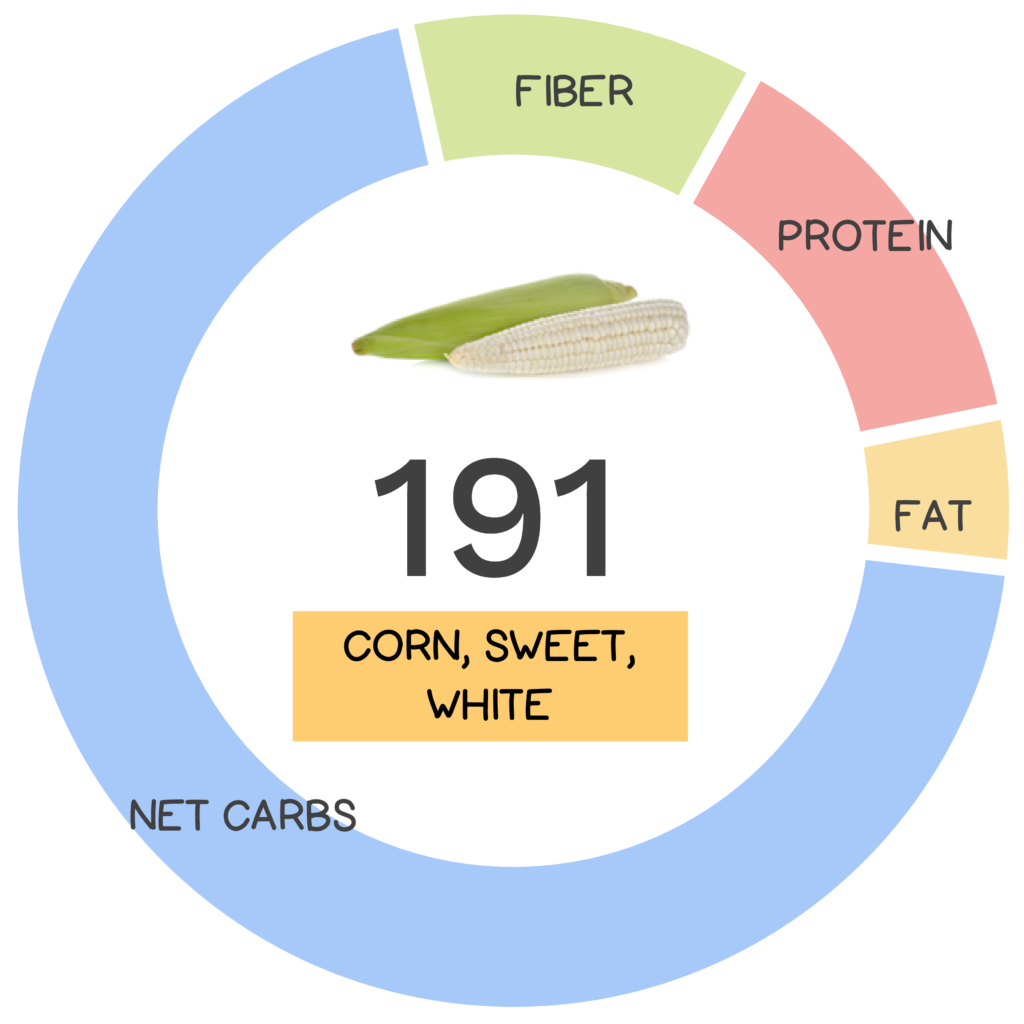
“A big lump with knobs… it has the juice. It’s corn!” Even prior to the famous interview and popular remixed song, this unique food, which is a vegetable when harvested before it is mature and eaten fresh but is a grain when harvested fully mature and eaten dried, has been a staple food worldwide. “Let me tell you all about it.”
Native Americans planted corn with beans and squash, dubbed the “Three Sisters”.
Around the world, corn is more commonly known as maize, derived from a native Taino (a now extinct indigenous Caribbean people) word meaning “giver of life” or “grain of the gods”. Indeed, corn has been an incredibly important crop in many regions and was first domesticated in southern Mexico about 10,000 years ago, later spreading to the rest of the world because of its ability to grow in diverse climates and conditions. Maize was one of the most important staple foods for many early cultures including Mesoamerican civilizations and Native Americans, who planted corn with beans and squash, dubbed the “Three Sisters” since these plants thrive together much like inseparable sisters (well, in some families!). The corn stalks provided support for the beans, while the low-growing squash shaded the ground to prevent moisture loss and discouraged pests. The beans made nitrogen readily available for the other plants, completing the perfect balance of companion planting.
Sweet corn is a genetic variant containing more sugar and less starch and developed to be eaten as a vegetable.
The earliest corn plants grew only a single, small (one inch) ear of corn ear per plant and were bred over the centuries to be much larger and bear multiple ears per plant, each of which consists of ~600 kernels. The cob itself is similar to ‘multiple fruits’ such as pineapple and raspberry, however in this case the individual fruits (or kernels) do not fuse together to form a single entity. The corn plant (Zea mays) is an annual grass in the Poaceae family, along with barley, rice, rye, sugarcane, and wheat. There are a “cornucopia” of varieties including dent, flint, flour, pod, popcorn, and sweet. Sweet corn is a genetic variant that was developed to be consumed as a vegetable, eaten straight off the cob (a summer tradition), canned, or frozen. Compared to other varieties, it contains more sugar and less starch. Sweet! (Pun intended.)
Corn is the fifth most commonly consumed vegetable in the USA, with Americans consuming an average of 4.4 pounds per year, more than half of that canned.
Worldwide corn production is greater than that of rice or wheat, however most corn is grown for animal feed, or to produce other products such as ethanol (biofuel), masa, corn meal, oil, starch, syrup, and whisky, with much less eaten in the whole-food form! That being said, it is a staple food in many parts of the world. The United States is the largest producer of corn, in part due to agricultural subsidies, with over 85% of it being genetically modified to protect against pests or for resistance to glyphosate. Of the 13 billion bushels of corn produced annually in the US, less than 5% is utilized for human consumption. Even still, it is a staple of most American diets, landing it as the fifth most commonly consumed vegetable in the USA, with Americans consuming an average of 4.4 pounds per year, more than half of that canned. And, even though corn tends to get a bad reputation due to its association with highly processed foods, when eaten in its whole form as a vegetable, it can be an ‘a-maize-ing’ nutrient-dense option! (Hyuck)
Nutrivore Score for White Sweet Corn – 191

White sweet corn has a Nutrivore Score of 191, making it a medium nutrient-dense food! Plus, it is a low-fat food; white sweet corn has 1.8 grams of fat per cup!
Per serving, white sweet corn is an excellent source (20-50% daily value) of vitamin B1 (thiamin), vitamin B5 (pantothenic acid), and vitamin B7 (biotin); and a good source (10-20% daily value) of dietary fiber, manganese, magnesium, phosphorus, polyphenols, protein, vitamin B3 (niacin), vitamin B9 (folate), and vitamin C.
Ditch Diets. Embrace Nutrients. Start with this FREE Guide.
Sign up for the free Nutrivore Newsletter, your weekly, science-backed guide to improving health through nutrient-rich foods — without dieting harder —and get the Beginner’s Guide to Nutrivore delivered straight to your inbox!

White Sweet Corn Nutrition Facts
One serving of white sweet corn is standardized to 1 cup or about 154 grams (5.4 ounces). To put this into perspective: one serving of white sweet corn is approximately equivalent to 2 small ears of corn (5 1/2 inch to 6 1/2 inch long) or 1 large ear of corn (7 3/4 inches to 9 inches long). When you cook sweet corn, the volume remains relatively consistent: 1 cup raw sweet corn is roughly equivalent to 1 cup boiled sweet corn.
White Sweet Corn Nutrition Facts Per Serving
| White sweet corn, raw | Nutrivore Score: 191 | Nutrient Density: Medium |
|---|---|---|
| Serving Size: 1 cup kernels, 2 small ears, (154 grams) | Protein: 5.0 grams | Net Carbohydrates: 25.1 grams |
| Calories: 132 | Total Fat: 1.8 grams | Dietary Fiber: 4.2 grams |
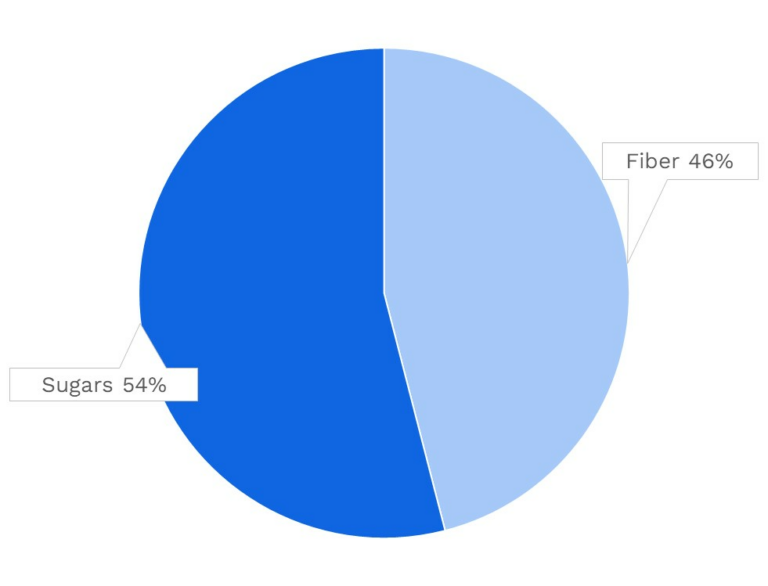
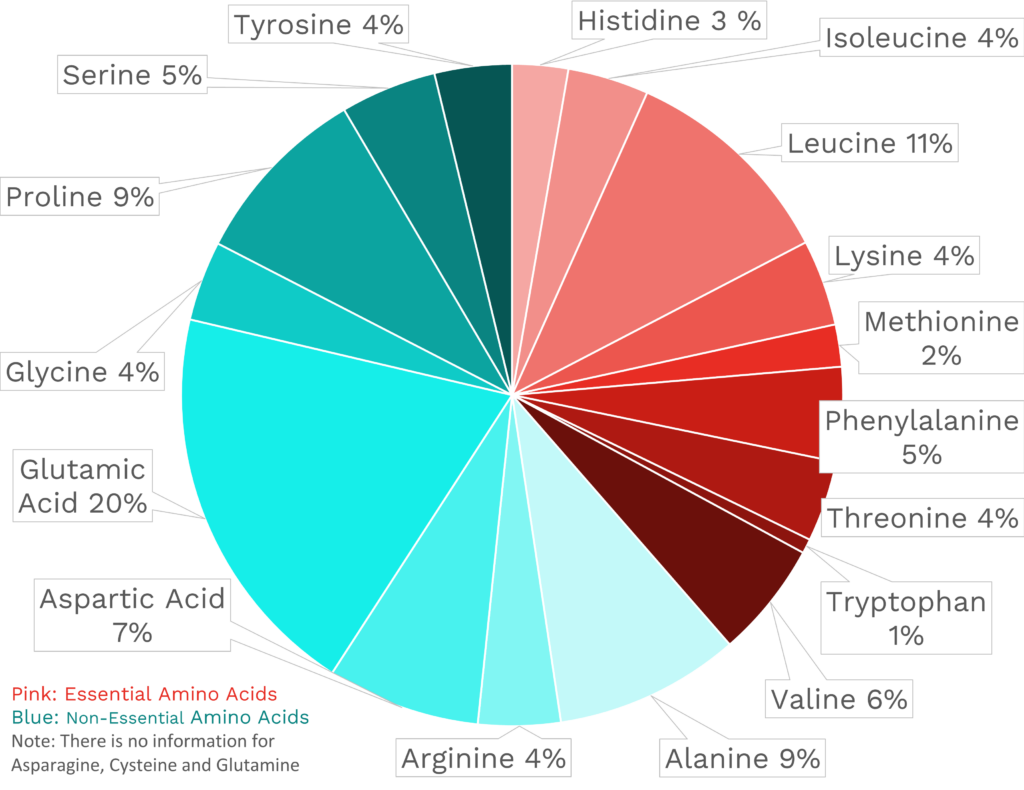
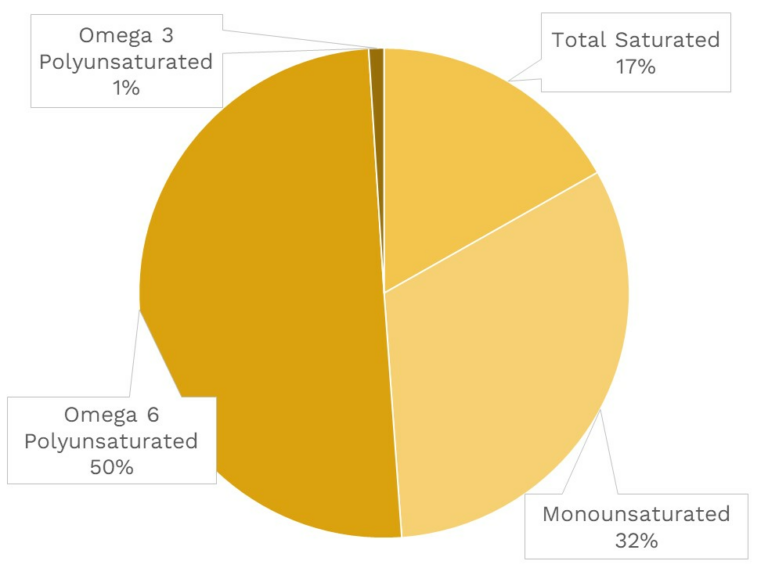
| VITAMINS | ||
|---|---|---|
| Vitamin A | 0.0 μg RAE | 0% DV |
| Vitamin B1 (Thiamin) | 308.0 μg | 26% DV |
| Vitamin B2 (Riboflavin) | 92.4 μg | 7% DV |
| Vitamin B3 (Niacin) | 2.6 mg | 16% DV |
| Vitamin B5 (Pantothenic Acid) | 1.2 mg | 23% DV |
| Vitamin B6 (Pyridoxine) | 84.7 μg | 5% DV |
| Vitamin B7 (Biotin) | 9.2 μg | 31% DV |
| Vitamin B9 (Folate) | 70.8 μg | 18% DV |
| Vitamin B12 (Cobalamin) | 0.0 μg | 0% DV |
| Vitamin C | 10.5 mg | 12% DV |
| Vitamin D (D2 + D3) | 0.0 μg | 0% DV |
| Vitamin E | 0.1 mg | 1% DV |
| Vitamin K | 0.5 μg | 0% DV |
| Choline | ~ | ~ |
| Myo-Inositol | 16.9 mg | ~ |
| CoQ10 | ~ | ~ |
| FUNCTIONAL FATS | ||
|---|---|---|
| MUFA | 0.5 g | 3% DV |
| ALA | 24.6 mg | 2% DV |
| EPA + DHA | 0.0 mg | 0% DV |
| CLA | ~ | ~ |
| Linoleic Acid | 0.8 g | 5% DV |
| MCT’s | ~ | ~ |
| MINERALS | ||
|---|---|---|
| Calcium | 3.1 mg | 0% DV |
| Copper | 83.2 μg | 9% DV |
| Iodine | ~ | ~ |
| Iron | 0.8 mg | 4% DV |
| Magnesium | 57.0 mg | 14% DV |
| Manganese | 247.9 μg | 11% DV |
| Phosphorus | 137.1 mg | 11% DV |
| Potassium | 415.8 mg | 9% DV |
| Selenium | 0.9 μg | 2% DV |
| Sodium | 23.1 mg | 1% DV |
| Zinc | 0.7 mg | 6% DV |
| PHYTONUTRIENTS | ||
|---|---|---|
| Carotenoids | 53.9 μg | ~ |
| Polyphenols | 77.6 mg | ~ |
| Phytosterols | 43.9 mg | ~ |
| Glucosinolates | ~ | ~ |
| Thiosulfinates | ~ | ~ |
| Betalains | ~ | ~ |
| AMINO ACIDS & PEPTIDES | ||
|---|---|---|
| Taurine | ~ | ~ |
| Ergothioneine | ~ | ~ |
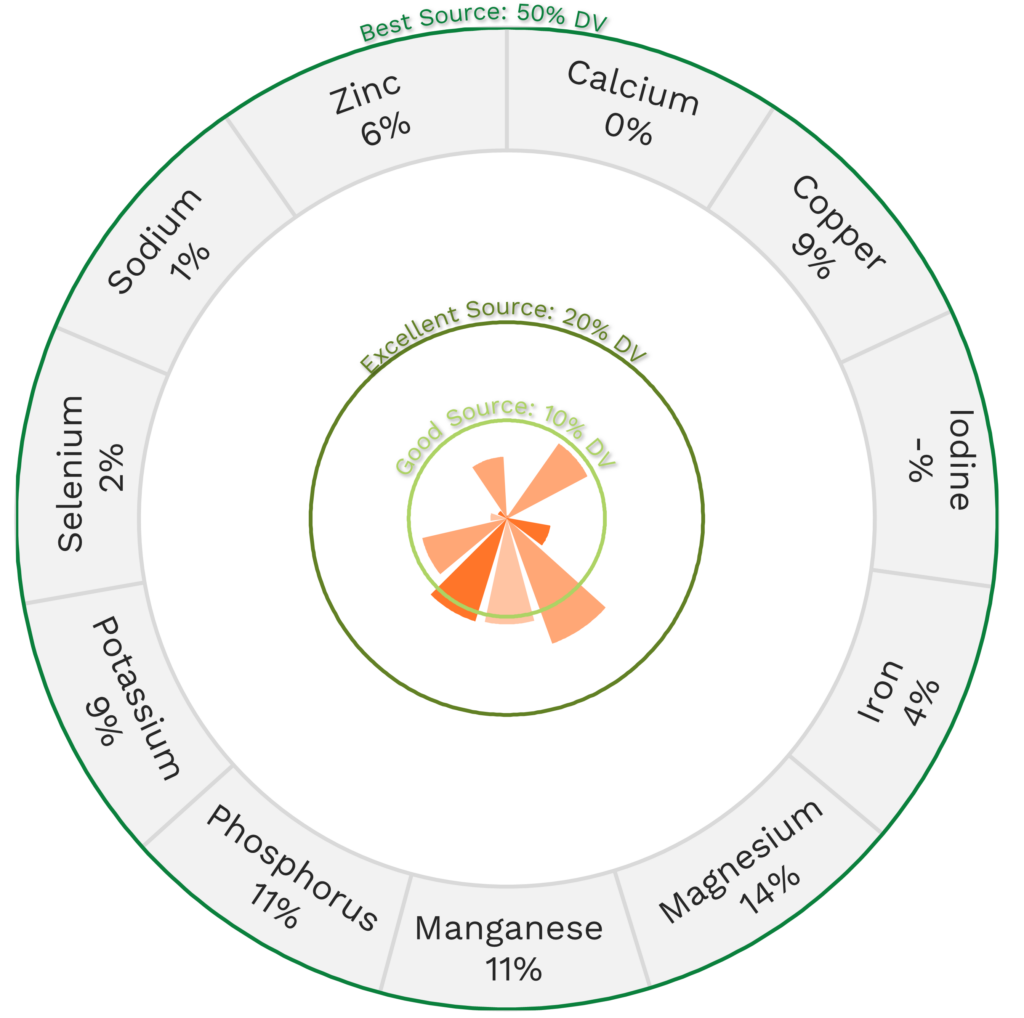
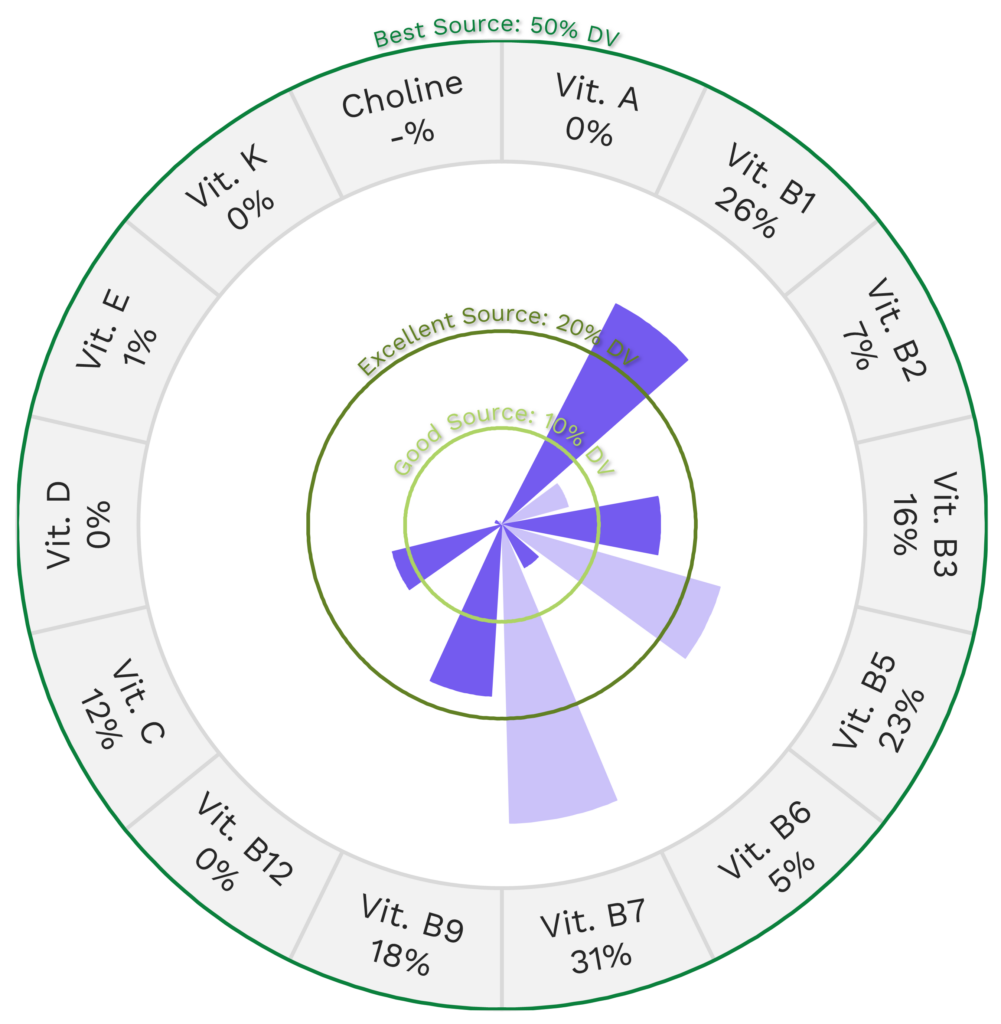
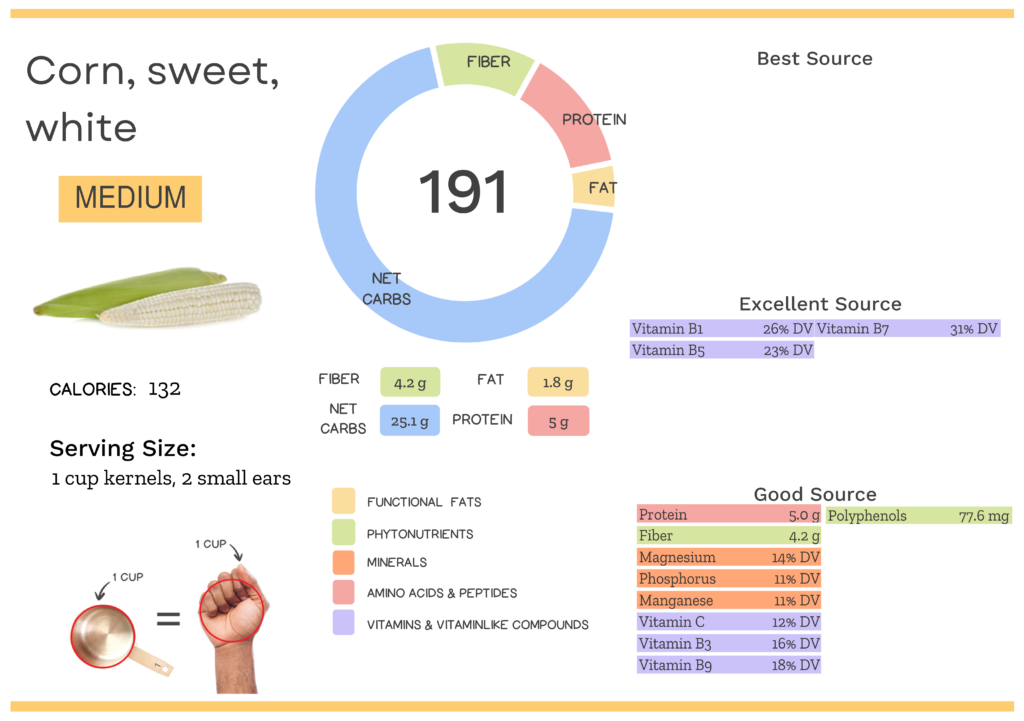
White Sweet Corn Nutrition Varies With Cooking and Processing
The Nutrivore Score of white sweet corn varies based on method of preparation and processing. When in season, fresh corn on the cob is a popular treat, but year-round frozen and canned corn is conveniently available at most grocery stores. Additionally, corn is processed into many other forms including bran, flour, and oil to name a few.
| NUTRIVORE SCORE | |
|---|---|
| Corn bran, crude | 220 |
| Corn flour, masa, white, unenriched | 761 |
| Corn flour, whole-grain, white | 831 |
| Corn oil, industrial and retail, all purpose salad or cooking | 103 |
| Cornmeal, whole-grain, white | 92 |
| White sweet corn, canned, vacuum pack, no salt added | 162 |
| White sweet corn, canned, vacuum pack, regular pack | 162 |
| White sweet corn, canned, whole kernel, drained solids | 166 |
| White sweet corn, canned, whole kernel, regular pack, solids and liquids | 159 |
| White sweet corn, canned, whole kernel, solids and liquids, no salt added | 154 |
| White sweet corn, cooked, boiled, drained, with salt | 169 |
| White sweet corn, cooked, boiled, drained, without salt | 169 |
| White sweet corn, frozen, kernels cut off cob, unprepared | 156 |
| White sweet corn, frozen, kernels on cob, unprepared | 164 |
| White sweet corn, raw | 191 |
Sweet Corn Nutrition Varies With Variety
The Nutrivore Score of sweet corn varies depending on variety, as does the taste. To maximize all the nutrients corn has to offer, try incorporating different types into your diet.
| NUTRIVORE SCORE | |
|---|---|
| Yellow sweet corn, raw | 202 |
| White sweet corn, raw | 191 |
A-MAIZE-d by all the nutrition in sweet corn? Maybe your friends will be too!
Health Benefits of White Sweet Corn Nutrients
Let’s take a closer look at all of the best and excellent source of nutrients found in a 1-cup serving of white sweet corn and see how they benefit our health.
White Sweet Corn Provides 31% DV Vitamin B7 (Biotin)
White sweet corn is an excellent source of vitamin B7 (biotin), providing 31% of the daily value per 1-cup serving!
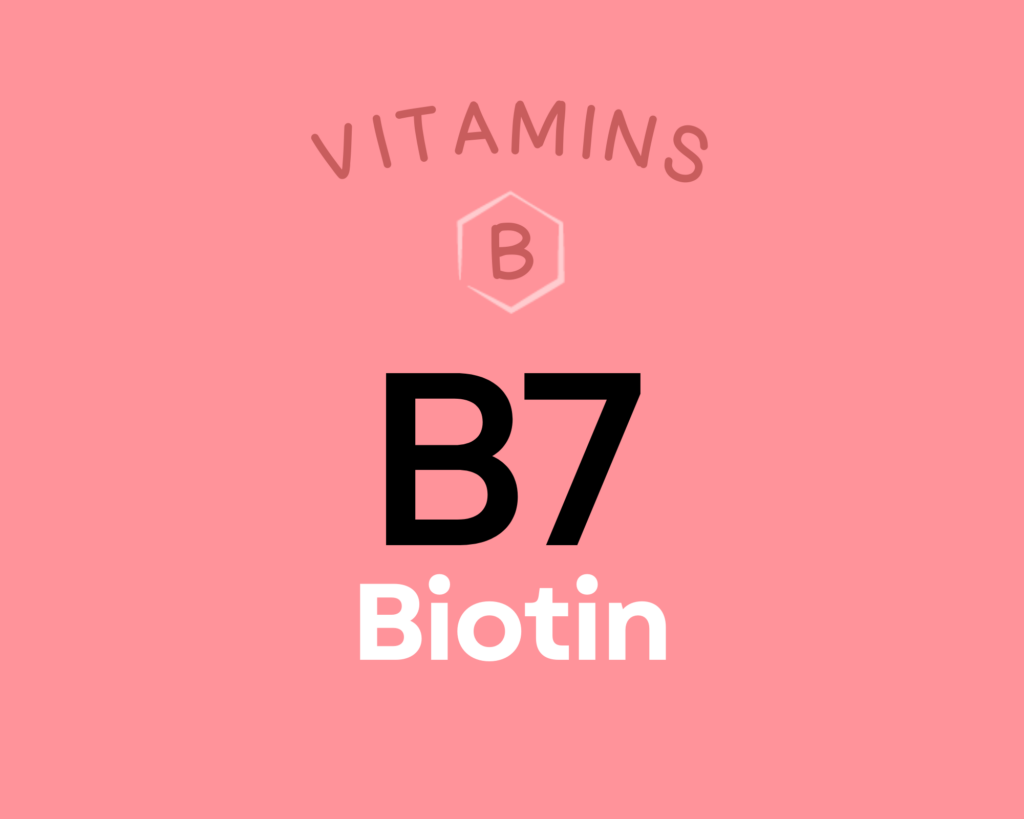
Biotin is a water-soluble B vitamin, also known as vitamin B7. Like other B vitamins, it plays an important role in energy metabolism (serving as a coenzyme for five carboxylase enzymes), neurotransmitter production, cellular function, and the function of various organs. Getting enough biotin can help support healthy nail and hair growth. It’s also particularly important during pregnancy, with low intakes increasing the risk of premature delivery and birth defects. There’s even some evidence biotin can benefit diabetics and reduce functional disabilities in people with multiple sclerosis. Learn more about biotin here.
White Sweet Corn Provides 26% DV Vitamin B1 (Thiamin)
White sweet corn is also an excellent source of vitamin B1 (thiamin), providing 26% of the daily value per 1-cup serving!
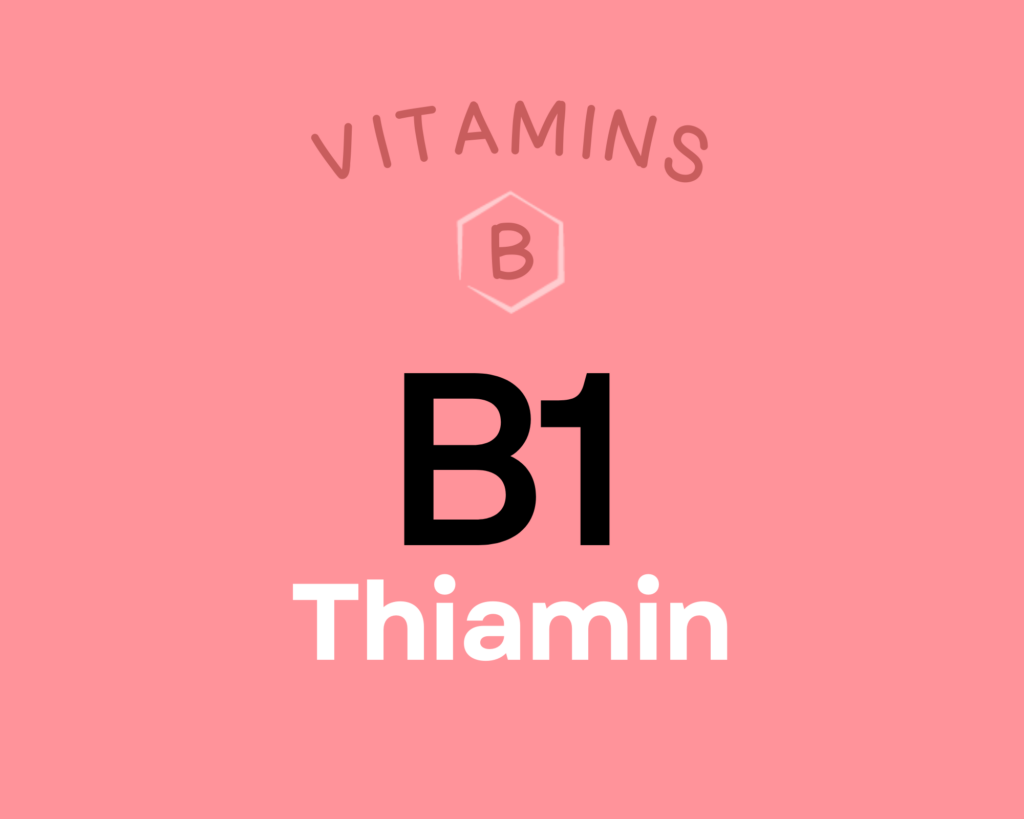
Thiamin (sometimes spelled thiamine, and also called vitamin B1) is a water-soluble vitamin. In its active form of thiamin pyrophosphate, it serves as a cofactor for a variety of enzymes involved in carbohydrate and amino acid metabolism, RNA and DNA production, and generating energy for the Krebs cycle. Research suggests vitamin B1 could help prevent blood sugar and insulin increases in people with disordered glucose metabolism, reduce the risk of cataracts, and improve health and mortality outcomes in patients with sepsis. Because aggressive tumors have high thiamin demands, it’s uncertain whether supplementing with thiamin while having cancer is beneficial due to preventing deficiency, or harmful due to providing more fuel for tumor growth. Insufficient thiamin may increase the risk of Alzheimer’s disease, and when chronic, leads to a deficiency disease called beriberi. Learn more about vitamin B1 here.
White Sweet Corn Provides 23% DV Vitamin B5 (Pantothenic Acid)
White sweet corn is an excellent source of vitamin B5 (pantothenic acid), providing 23% of the daily value per 1-cup serving!
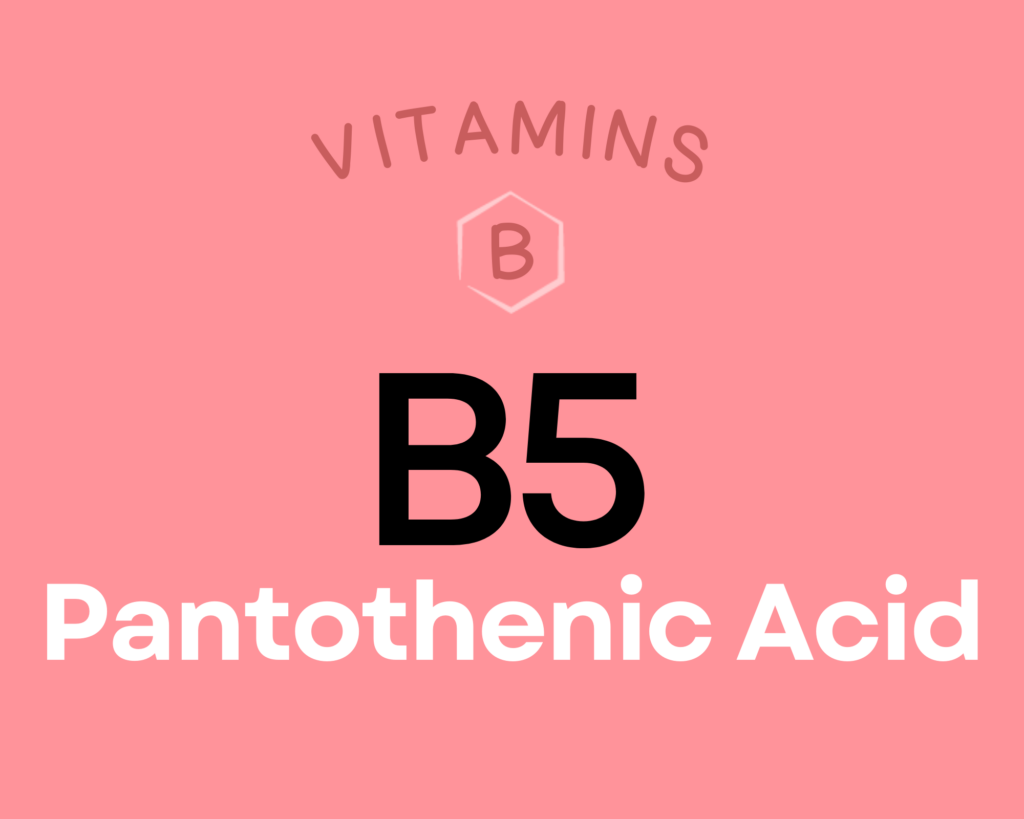
Pantothenic acid (or vitamin B5) is a water-soluble vitamin that serves as a cofactor for coenzyme A—which itself is critical for metabolizing many drugs and toxins, as well as forming derivatives (acetyl-CoA and succinyl-CoA) that participate in the synthesis of cholesterol, fatty acids, melatonin, the neurotransmitter acetylcholine, steroid hormones, heme, and vitamins A and D. Coenzyme A is also needed in the Krebs cycle, giving pantothenic acid a role in energy metabolism. Research suggests that a pantothenic acid derivative (pantethine) can help improve blood lipid profiles and reduce fatty streak formation and lipid deposition in the arteries, giving it a cardio-protective role. Additional research shows that panthothenic acid can accelerate wound healing, boost cellular production of the important antioxidant glutathione, and possibly help improve symptoms of rheumatoid arthritis. Learn more about vitamin B5 here.
Learn What Foods Are the Best Sources of Every Nutrient

The Top 25 Foods for Every Nutrient
The Top 25 Foods for Every Nutrient e-book is a well-organized, easy-to-use, grocery store-friendly guide to help you choose foods that fit your needs of 43 important nutrients while creating a balanced nutrient-dense diet.
Get two “Top 25” food lists for each nutrient, plus you’ll find RDA charts for everyone, informative visuals, fun facts, serving sizes and the 58 foods that are Nutrient Super Stars!
Buy now for instant digital access.
How Much White Sweet Corn Should We Eat Per Day?
Although corn gets a bad rap due to its association with high-fructose corn syrup and corn oil widely used in processed foods, it is an incredibly important crop in many regions of the world and has a lot more health benefits than we give it credit for!
Every serving of fresh, whole vegetables or fruit we eat daily reduces the risk of all-cause mortality by 5% to 8%, with the greatest risk reduction seen when we consume five or more servings per day. In fact, consuming 800 grams of vegetables and fruits daily reduces all-cause mortality by 31% compared to eating less than 40 grams daily. A 2017 meta-analysis showed that 2.24 million deaths from cardiovascular disease, 660,000 deaths from cancer, and 7.8 million deaths from all causes could be avoided globally each year if everyone consumed 800 grams of veggies and fruits every day.
Eating vegetables and fruit in abundance lowers risk of cancer, cardiovascular disease, type 2 diabetes, obesity, chronic kidney disease, osteoporosis and bone fragility fractures (including hip fracture), cognitive impairment and dementia (including Alzheimer’s disease), neurodegenerative diseases, asthma, allergies, chronic obstructive pulmonary disease, age-related macular degeneration, cataracts, glaucoma, depression, ulcerative colitis and Crohn’s disease, rheumatoid arthritis, inflammatory polyarthritis, non-alcoholic fatty liver disease, acne, seborrheic dermatitis, and lowers markers of inflammation. Learn more in Importance of Vegetables and Fruit.
Covering half of your plate with a variety of vegetables (and three quarters of your plate if your starchy food is a root vegetable or winter squash) at each meal is a simple way to easily achieve the goal of 5 or more servings of vegetables daily.
Components in corn have been shown to reduce LDL-cholesterol, glucose and insulin responses from meals, and have anticancer and antioxidant properties, plus corn has been shown to benefit the gut microbiome.
The phytosterols in corn are known to reduce LDL levels (without affecting HDL levels) by inhibiting cholesterol absorption in the intestine, the lignans in corn have anticancer and antioxidant properties, and resistant starch from corn reduces glucose and insulin responses from meals, plus corn has been shown to benefit the gut microbiome as well!
It’s always best to mix up the veggies you eat day to day (aiming for a wide variety of different vegetables and fruits throughout the week), and sweet corn definitely has a place at the table.
Easily track your servings of Nutrivore Foundational Foods!

The Nutrivore Weekly Serving Matrix
The Nutrivore Weekly Serving Matrix digital resource is an easy-to-use and flexible weekly checklist designed to help you maximize nutrient-density and meet serving suggestions of Nutrivore foundational foods, all without having to weigh or measure your foods!
Includes a 22-page instructional guide and downloadable interactive guides.
Buy now for instant digital access.
cITATIONS
Expand to see all scientific references for this article.
Chun OK, Kim DO, Smith N, Schroeder D, Han JT, Lee CY. Daily consumption of phenolics and total antioxidant capacity from fruit and vegetables in the American diet. Journal of the Science of Food and Agriculture. 2005. Aug;85(10):1715-1724. https://doi.org/10.1002/jsfa.2176
Clements RS Jr, Darnell B. Myo-inositol content of common foods: development of a high-myo-inositol diet. Am J Clin Nutr. 1980 Sep;33(9):1954-67. doi: 10.1093/ajcn/33.9.1954. PMID: 7416064.
Fineli Finnish Food Composition Database: Sweet Corn Kernels
Piironen V, Toivo J, Puupponen-Pimia R, Lamp AM. Plant sterols in vegetables, fruits and berries. Journal of the Science of Food and Agriculture. 2003. Vol 83(4):330-337. doi:10.1002/jsfa.1316
USDA Food Central Database: Corn, sweet, white, raw
Watanabe T, Kioka M, Fukushima A, Morimoto M, Sawamura H. Biotin content table of select foods and biotin intake in Japanese. Int J Anal Bio-Sci. 2014. Vol 2(4):109-125.


